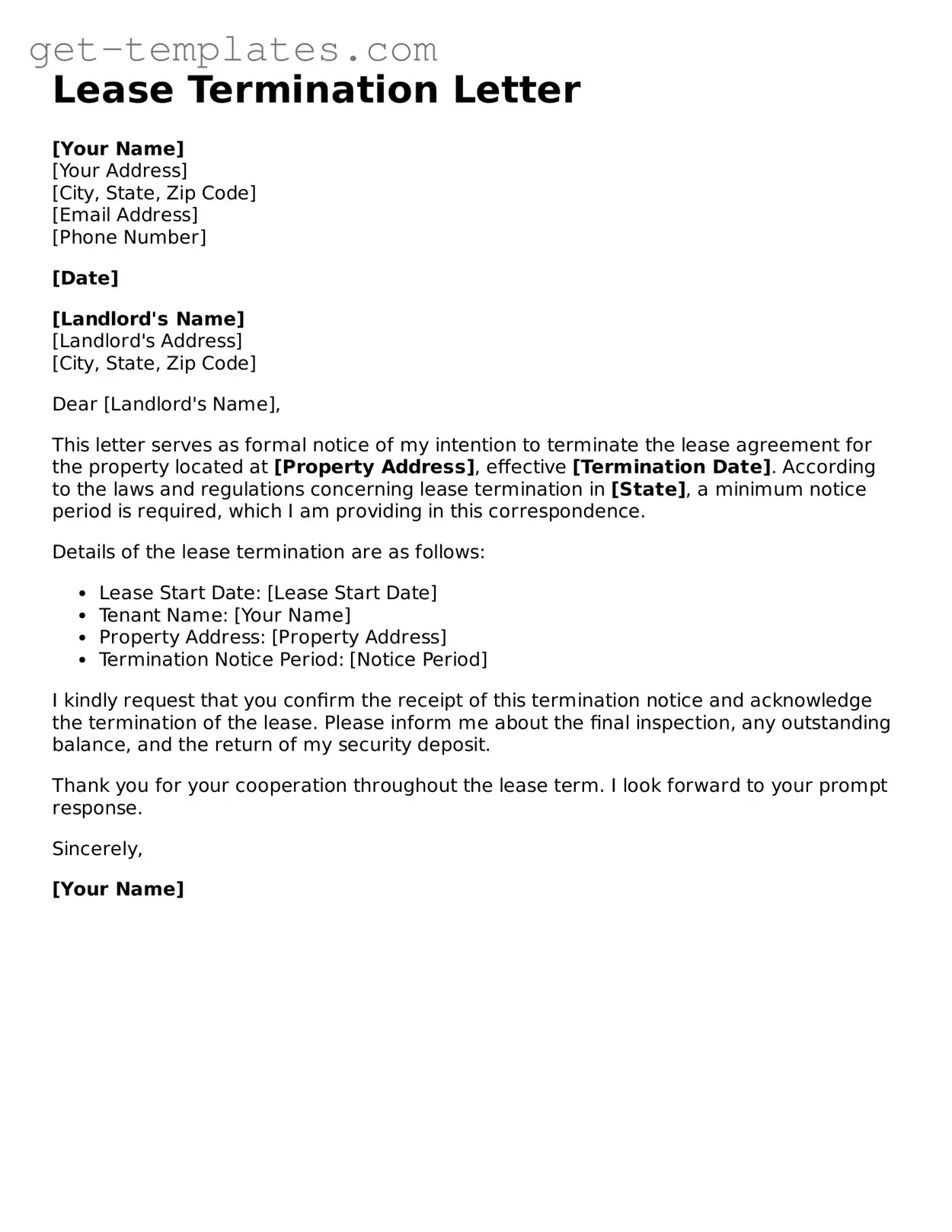Lease Termination Letter
[Your Name]
[Your Address]
[City, State, Zip Code]
[Email Address]
[Phone Number]
[Date]
[Landlord's Name]
[Landlord's Address]
[City, State, Zip Code]
Dear [Landlord's Name],
This letter serves as formal notice of my intention to terminate the lease agreement for the property located at [Property Address], effective [Termination Date]. According to the laws and regulations concerning lease termination in [State], a minimum notice period is required, which I am providing in this correspondence.
Details of the lease termination are as follows:
- Lease Start Date: [Lease Start Date]
- Tenant Name: [Your Name]
- Property Address: [Property Address]
- Termination Notice Period: [Notice Period]
I kindly request that you confirm the receipt of this termination notice and acknowledge the termination of the lease. Please inform me about the final inspection, any outstanding balance, and the return of my security deposit.
Thank you for your cooperation throughout the lease term. I look forward to your prompt response.
Sincerely,
[Your Name]
